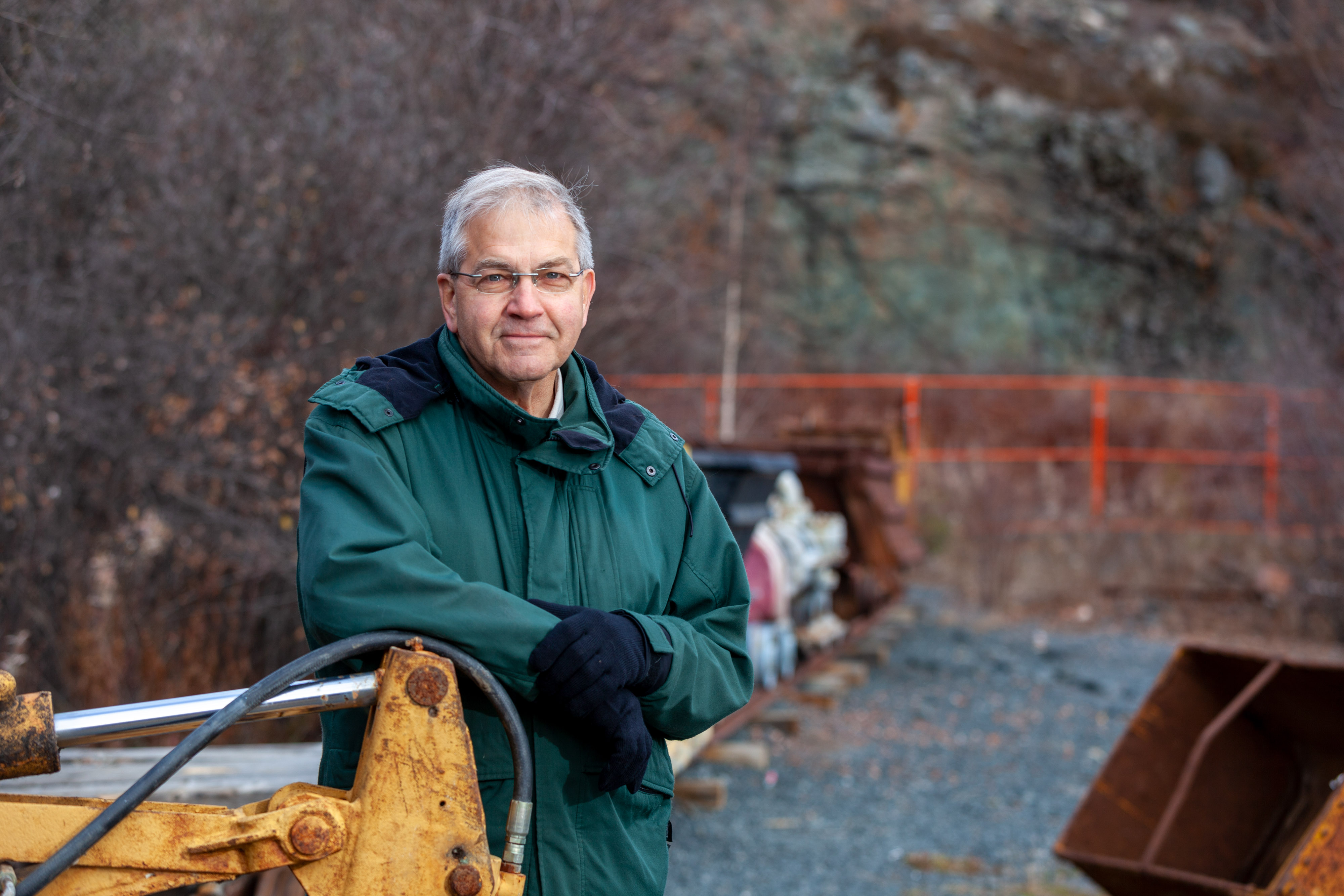When Canadian diamonds burst on to the scene in 1991, few could have known, the growth and capacity that they would bring to Northwest Territories (NWT) businesses and the economy. It was, by most estimations, transformational.
“We were that proverbial dog that caught the car,” chuckles Tom Hoefer. He was working in the mining industry at the time. Today, he is a Senior Advisor for the NWT and Nunavut Chamber of Mines. “We had no idea what we were dealing with. It happened so fast.”

It sure did. The Ekati mine was fast tracked from discovery to production in just seven years. In another five, Diavik opened, and the NWT had emerged as a top tier global producer. By 2008 the territory’s third diamond mine, Snap Lake, was also operational; and drilling had begun for what would be its fourth diamond mine, Gahcho Kué.
In the NWT’s capital of Yellowknife, the arrival of diamonds left little time to even mark the closure of its two long-standing gold mines.
“There was barely a hiccup,” then Premier Stephen Kakfwi remembers. The city, that had once bragged that its “gold was paved with streets” was quick to adopt a new moniker: “Diamond Capital of North America”.
More significantly, the impact of diamonds was being felt beyond its capital region. The availability of labour incomes established new economies in communities where they hadn’t existed before. Across the NWT, residents embraced the idea and benefits of two-on-two-off jobs with six-figure paycheques.

“Ladies from as far away as Fort Good Hope were working in a diamond mine. They loved it,” Kakfwi recalls.
“In places like Behchoko, you could tell who worked at the mines, they had the bigger houses... with a new truck out front; sometimes two, a couple of snowmobiles maybe an outboard motor.”
Indirectly, diamonds were impacting traditional political structures. Where the Tlicho-speaking hunters, trappers and traditional knowledge holders were the once the powers to be, Kakfwi remembers, in very quick order, the leaders became younger.
Meanwhile, as Canada’s world-class mines chose to sell their supply outside of the traditional De Beers strong hold, NWT diamonds were also changing life globally. In the face of a declining monopoly and increasingly negative publicity surrounding blood diamonds, DeBeers was forced to change its business model.
And, thanks to a guaranteed allocation of rough to NWT diamond polishing plants, the NWT turned the world’s diamond industry on its ear by proving that diamonds could be cut and polished outside of traditional centres like Holland, India and Antwerp.
NWT diamonds were the first to be government tracked and certified. On close inspection, they sported a tiny engraved polar bear to prove it.
The quest for diamonds also evolved environmental legislation in the NWT. In under 20 years, the NWT’s four diamond mines took three different regulatory routes to operation.
“For each mine, it took a little longer,” Hoefer noted, as he watched the NWT’s regulatory system mature and take shape.
In 2014, an agreement was finally inked to devolve authorities and responsibilities for lands and resources from the federal government to the Government of the NWT. It included another first – a deal to share diamond royalties across all three levels of NWT government – federal, territorial and Indigenous.
Today, the NWT is finalizing regulations for its new made-in-the-NWT mining Act. With its consultative and collaborative approach and regulations co-drafted with Indigenous partners, the Northwest Territories Mineral Resources Act is being heralded as a milestone for Canadian mining.
While that remains to be seen, a modern, streamlined legislative environment focused on the priorities of NWT residents and grounded in the consensus of northern governments and industry and Indigenous partners, will be unique in Canada.
So, even if diamond mines aren’t forever, there benefits can be.
While the NWT’s original mines are credited with paying it forward in infrastructure like roads, rail lines and hydro facilities, Hoefer says diamonds offer a new type of legacy.
“They’ve invested in people,” he says. “Their legacy will be the partnerships they have inspired with our public and Indigenous governments.”
Proponents of major projects in the NWT must agree to ensure economic benefits will stay in the North. Socio-economic and benefit agreements set out targets for things like training, procurement, wellness initiatives, and local employment.
“In many ways diamonds gave us a model of how development could be done,” Kakfwi adds. “The role of government, the role of Indigenous people, the role of northern people; of the federal government, the government of the NWT and the mine itself.”
With the growth of world-class diamond mines in the NWT came an explosion in local businesses providing the expertise and skills to service them. Settled land claims gave Indigenous governments the financial resources to invest in a multitude of NWT-based companies.
These grown-in-the-NWT corporations now own an impressive stable of aviation, engineering, trucking, and logistics companies. In addition to servicing NWT mines, they supply vehicles, heavy equipment and specialized expertise in areas like winter building and ice road construction. Some have outgrown their beginnings and are expanding to service projects around the circumpolar Arctic and in southern provinces.
Tlicho elder Ted Blondin once quipped: “When Ekati opened, we were looking for jobs; by the time Diavik opened we were looking for business.” Since 1996, diamond mines in the NWT have spent more than $19.3 billion with northern businesses; $8.6 billion specifically with Indigenous businesses.
Paul Gruner heads the Tlicho Investment Corporation (TIC) – the economic development arm of the NWT’s Tlicho government. He says entities like TIC (and the Deton'cho Corporation owned by the Yellowknife Dene First Nation), now offer a major asset to prospective mines and projects.

“If you are flying your workforce in, that’s a massive cost driver. The fact that we continue to build a technical, strong, stable, workforce that is local is a huge value proposition.”
“Thirty years ago, we didn’t have the level of capacity or understanding that we do today. Think about the learning that we can now apply, think about the ownership structure, the equity stakes within the mines themselves, or owning the equipment, the power plants and the roads.”
However, Graeme Clinton says he’s worried that while the inaugural decade of diamonds spurred Indigenous economic development corporations and their numerous businesses and joint ventures, momentum wasn’t maintained. A professional economist based in Yellowknife, he says new ideas to spur further innovation within the labour supply and business community have waned.
“Policies that worked to bring new entrants into the workforce, to build the capacity within our business community, and expand NWT businesses into new areas require revision.”
Gruner concurs. “We need to be bolder,” he says.
With a new rush of interest in NWT critical minerals, he’s not waiting on government. Gruner believes that collaboratively, the North’s development companies can build on their track record with diamonds to move the needle in areas where government hasn’t - even in infrastructure investments like clean power.
One of his priorities is housing – for a northern workforce, that wasn’t there the first time. In the meantime, Hoefer wants to start the conversation about an NWT-based processing plant for critical minerals.
But, if there is a company that best personifies the NWT’s 30-year diamond legacy, it just may be DEMCo. a 100% Dene-owned mineral exploration and mining company. Its Camsell River property near Great Bear Lake is a promising site for iron-oxide-copper-gold (IOCG) and potential critical minerals.
“It was the logical next step,” says President, Darrell Beaulieu. “Mines generate revenues. We made the decision to pursue ownership. A homegrown indigenous service industry was already in place; we could import what we needed to fill the gaps. Obviously, ownership is never 100 per cent and we’re going to need partners - but, we are the decision makers.”
For his part, Clinton believes that the North is entering an economic transition to a life after diamonds.
“Northerners are ready to embrace the next good project that comes along,” he says. “The opportunity for risk takers is now.”